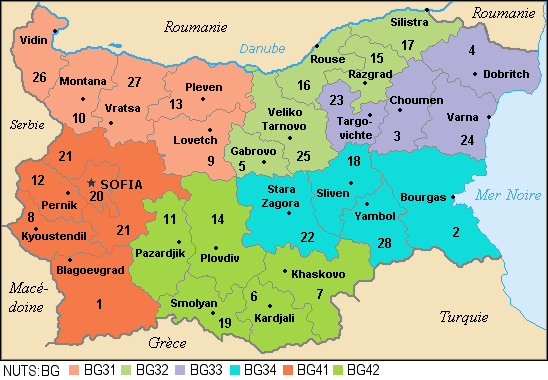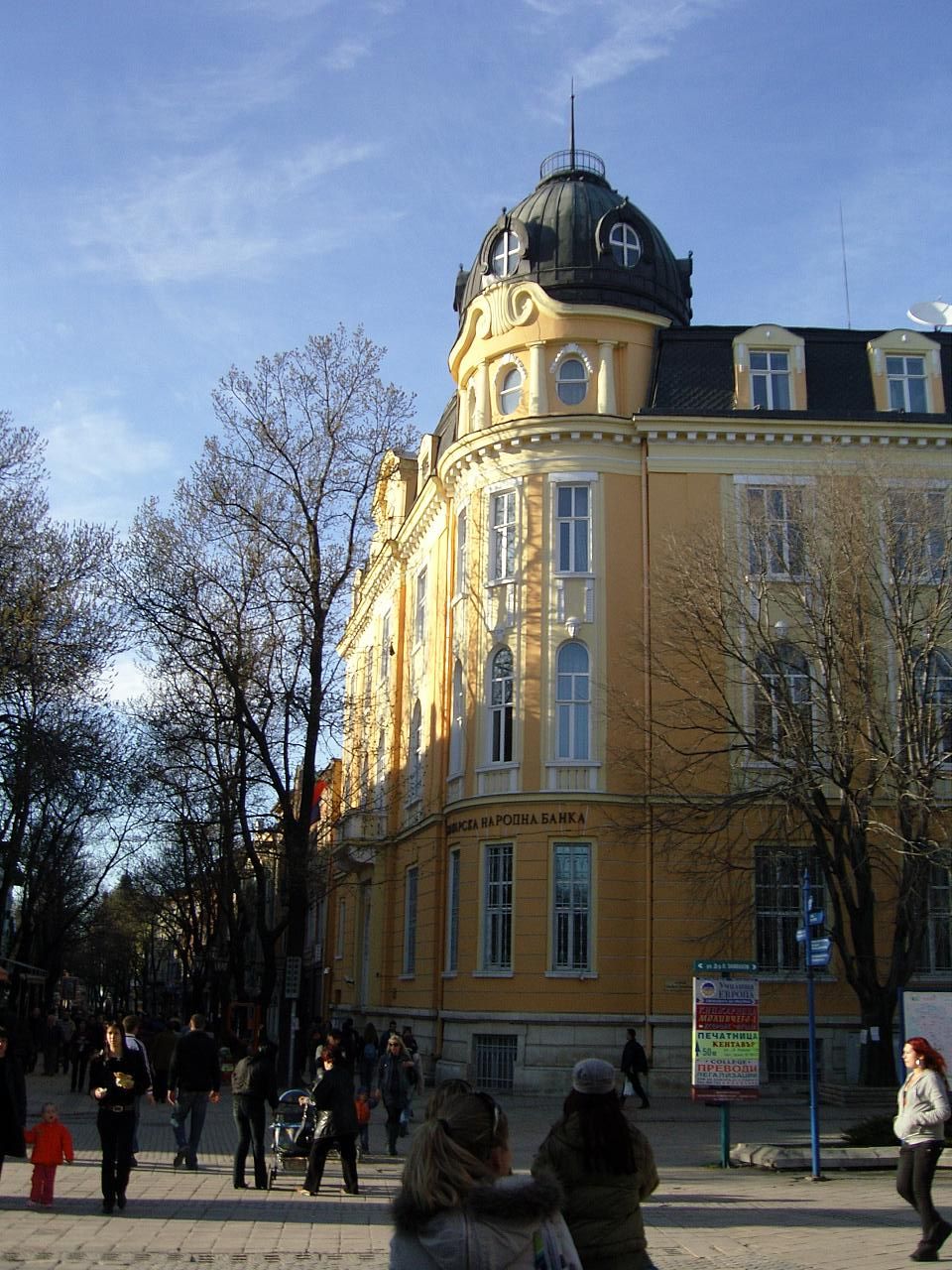|
Gulyantsi
Gulyantsi ( bg, Гулянци, ; also transliterated ''Guljanci'', ''Gulyanci'', ''Guliantzi'', ''Gulyantzi'', etc.) is a town in central northern Bulgaria, part of Pleven Province. It is the administrative centre of Gulyantsi municipality and lies in the central north of the province, near the town of Nikopol, very close to the Danube River. As of December 2009, the town has a population of 3,432 inhabitants.Bulgarian National Statistical Institute - towns in 2009 Gulyantsi lies 34 kilometres north of the provincial capital , 4 kilometres south of the Danube and 7-8 kilometres southwest of the mouth of the |
Gulyantsi Municipality
Gulyantsi Municipality ( bg, Община Гулянци) is a municipality ('' obshtina'') in Pleven Province, Northern Bulgaria, located along the right bank of Danube river, by the border with Romania. It is named after its administrative centre - the town of Gulyantsi. As of December 2009, the municipality has a total population of 13,561 inhabitants.Bulgarian National Statistical Institute - Bulgarian provinces and municipalities in 2009 The main cultural sight in the municipality are the ruins of the large Ancient Roman city of |
Pleven Province
Pleven Province ( bg, Област Плевен or Плевенска Област) is a province located in central northern Bulgaria, bordering the Danube river, Romania and the Bulgarian provinces of Vratsa, Veliko Tarnovo and Lovech. It is divided into 11 subdivisions, called municipalities, that embrace a territory of with a population, as of February 2011, of 269 752 inhabitants.Census 2011 Bulgarian National Statistical Institute - Bulgarian provinces and municipalities in 2009 /ref> [...More Info...] [...Related Items...] OR: [Wikipedia] [Google] [Baidu] |
Gigen
Gigen ( bg, Гиген, ) is a village in northern Bulgaria, part of Gulyantsi Municipality, Pleven Province. It is located near the Danube River, close to the place where the Iskar River empties into it, opposite the Romanian town of Corabia. Gigen is most famous for being built on the site of the important Roman colony of Oescus. The extensive ruins are located in the northwestern part of the village and were first associated with the ancient colony in the end of the 17th century. A bridge, built or reconstructed by Constantine I and named Constantine's Bridge in his honour, linked Oescus with Sucidava (modern Corabia) across the Danube in the 4th century. Gigen is also known for an anti-Bogomil inscription in Old Bulgarian dating to the 10th century, the rule of Tsar Peter I of Bulgaria. The text was discovered in the old village church, inscribed on a stone block 85 centimetres in width. According to the scientifically accepted reading, the text of the inscription is as ... [...More Info...] [...Related Items...] OR: [Wikipedia] [Google] [Baidu] |
Countries Of The World
The following is a list providing an overview of sovereign states around the world with information on their status and recognition of their sovereignty. The 206 listed states can be divided into three categories based on membership within the United Nations System: 193 member states of the United Nations, UN member states, 2 United Nations General Assembly observers#Present non-member observers, UN General Assembly non-member observer states, and 11 other states. The ''sovereignty dispute'' column indicates states having undisputed sovereignty (188 states, of which there are 187 UN member states and 1 UN General Assembly non-member observer state), states having disputed sovereignty (16 states, of which there are 6 UN member states, 1 UN General Assembly non-member observer state, and 9 de facto states), and states having a political status of the Cook Islands and Niue, special political status (2 states, both in associated state, free association with New Zealand). Compi ... [...More Info...] [...Related Items...] OR: [Wikipedia] [Google] [Baidu] |
Bulgaria
Bulgaria (; bg, България, Bǎlgariya), officially the Republic of Bulgaria,, ) is a country in Southeast Europe. It is situated on the eastern flank of the Balkans, and is bordered by Romania to the north, Serbia and North Macedonia to the west, Greece and Turkey to the south, and the Black Sea to the east. Bulgaria covers a territory of , and is the sixteenth-largest country in Europe. Sofia is the nation's capital and largest city; other major cities are Plovdiv, Varna and Burgas. One of the earliest societies in the lands of modern-day Bulgaria was the Neolithic Karanovo culture, which dates back to 6,500 BC. In the 6th to 3rd century BC the region was a battleground for ancient Thracians, Persians, Celts and Macedonians; stability came when the Roman Empire conquered the region in AD 45. After the Roman state splintered, tribal invasions in the region resumed. Around the 6th century, these territories were settled by the early Slavs. The Bulgars, led by Asp ... [...More Info...] [...Related Items...] OR: [Wikipedia] [Google] [Baidu] |
Provinces Of Bulgaria
The provinces of Bulgaria ( bg, области на България, oblasti na Bǎlgarija) are the first-level administrative subdivisions of the country. Since 1999, Bulgaria has been divided into 28 provinces ( bg, области, links=no – ''oblasti;'' singular: – ''oblast''; also translated as "regions") which correspond approximately to the 28 districts (in bg, links=no, окръг – ''okrug, okrǎg'', plural: – ''okrǎzi''), that existed before 1987. The provinces are further subdivided into 265 municipalities (singular: – ''obshtina'', plural: – ''obshtini''). Sofia – the capital city of Bulgaria and the largest settlement in the country – is the administrative centre of both Sofia Province and Sofia City Province (Sofia-Grad (toponymy), grad). The capital is included (together with three other cities plus 34 villages) in Sofia Capital Municipality (over 90% of whose population lives in Sofia), which is the sole municipality comprising Sofia City ... [...More Info...] [...Related Items...] OR: [Wikipedia] [Google] [Baidu] |
Eastern European Time
Eastern European Time (EET) is one of the names of UTC+02:00 time zone, 2 hours ahead of Coordinated Universal Time. The zone uses daylight saving time, so that it uses UTC+03:00 during the summer. A number of African countries use UTC+02:00 all year long, where it is called Central Africa Time (CAT), although Egypt and Libya also use the term ''Eastern European Time''. The most populous city in the Eastern European Time zone is Cairo, with the most populous EET city in Europe being Athens. Usage The following countries, parts of countries, and territories use Eastern European Time all year round: * Egypt, since 21 April 2015; used EEST ( UTC+02:00; UTC+03:00 with daylight saving time) from 1988–2010 and 16 May–26 September 2014. See also Egypt Standard Time. * Kaliningrad Oblast (Russia), since 26 October 2014; also used EET in years 1945 and 1991–2011. See also Kaliningrad Time. * Libya, since 27 October 2013; switched from Central European Time, which was u ... [...More Info...] [...Related Items...] OR: [Wikipedia] [Google] [Baidu] |
Eastern European Summer Time
Eastern European Summer Time (EEST) is one of the names of the UTC+03:00 time zone, which is 3 hours ahead of Coordinated Universal Time. It is used as a summer daylight saving time in some European and Middle Eastern countries, which makes it the same as Arabia Standard Time, East Africa Time, and Moscow Time. During the winter periods, Eastern European Time ( UTC+02:00) is used. Since 1996, European Summer Time has been applied from the last Sunday in March to the last Sunday in October. Previously, the rules were not uniform across the European Union. Usage The following countries and territories use Eastern European Summer Time during the summer: * Belarus, Moscow Summer Time in years 1981–89, regular EEST from 1991-2011 * Bulgaria, regular EEST since 1979 * Cyprus, regular EEST since 1979 ( Northern Cyprus stopped using EEST in September 2016, but returned to EEST in March 2018) * Estonia, Moscow Summer Time in years 1981–88, regular EEST since 1989 * Finland, regu ... [...More Info...] [...Related Items...] OR: [Wikipedia] [Google] [Baidu] |
Nikopol, Bulgaria
Nikopol ( bg, Никопол ; historically el, Νικόπολις, Nikópolis, la, Nicopolis, tr, Niğbolu) is a town in northern Bulgaria, the administrative center of Nikopol Municipality, part of Pleven Province, on the right bank of the Danube river, downstream from the Danube’s confluence with the Osam river. It spreads at the foot of steep chalk cliffs along the Danube and up a narrow valley. History In Roman times, it was a village in the province of Moesia, first mentioned in 169. After the decline of the Roman Empire, the town turned out to be located at the northern border of the Byzantine Empire. In 1059, it was named ''Nicopolis'', Greek for "City of Victory". During most of the Middle Ages, it was part of the Bulgarian Empire from its foundation in 681. After the fall of Tarnovo in 1393, the last Bulgarian Tsar Ivan Shishman defended what remained of the Empire from the fortress of Nikopol, where he was captured after the town was conquered by the Ottoma ... [...More Info...] [...Related Items...] OR: [Wikipedia] [Google] [Baidu] |
Danube
The Danube ( ; ) is a river that was once a long-standing frontier of the Roman Empire and today connects 10 European countries, running through their territories or being a border. Originating in Germany, the Danube flows southeast for , passing through or bordering Austria, Slovakia, Hungary, Croatia, Serbia, Romania, Bulgaria, Moldova, and Ukraine before draining into the Black Sea. Its drainage basin extends into nine more countries. The largest cities on the river are Vienna, Budapest, Belgrade and Bratislava, all of which are the capitals of their respective countries; the Danube passes through four capital cities, more than any other river in the world. Five more capital cities lie in the Danube's basin: Bucharest, Sofia, Zagreb, Ljubljana and Sarajevo. The fourth-largest city in its basin is Munich, the capital of Bavaria, standing on the Isar River. The Danube is the second-longest river in Europe, after the Volga in Russia. It flows through much of Central and Sou ... [...More Info...] [...Related Items...] OR: [Wikipedia] [Google] [Baidu] |
Pleven
Pleven ( bg, Плèвен ) is the seventh most populous city in Bulgaria. Located in the northern part of the country, it is the administrative centre of Pleven Province, as well as of the subordinate Pleven municipality. It is the biggest economic center in Northwestern Bulgaria. At the 2021 census its population was 89,823. Internationally known for the siege of Plevna of 1877, it is today a major economic centre of the Bulgarian Northwest and Central North and the third largest city of Northern Bulgaria after Varna and Ruse. Name The name comes from the Slavic word ''plevnya'' ("barn") or from ''plevel'', meaning "weed", sharing the same root, and the Slavic suffix ''-en''. Geography Pleven is in an agricultural region in the middle of the Danubian Plain, the historical region of Moesia, surrounded by low limestone hills, the Pleven Heights. The city's central location in Northern Bulgaria defines its importance as a big administrative, economic, political, cultura ... [...More Info...] [...Related Items...] OR: [Wikipedia] [Google] [Baidu] |
Iskar River
The Iskar ( bg, Искър, ; la, Oescus) is a right tributary of the Danube. With a length of 368 km it is the longest river that runs entirely within Bulgaria.Statistical Yearbook 2017 , p. 17 Originating as three forks in 's highest mountain range , it flows in northern direction until its confluence with the |





